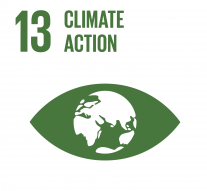Global efforts to bring down emissions are at the top of the agenda at the UN Climate Action Summit, which takes place in New York in these days. It’s necessary to put particular emphasis on the need for urgent global action on energy efficiency. This critical but often overlooked area can deliver major reductions in emissions while supporting economic growth, reducing air pollution and also saving consumers money.
Energy efficiency could bring energy-related CO2 emissions in 2040 to levels that are 12% lower than today; this would representover 40% of the emissions abatement required to meet the Paris Agreement. But despite this huge potential, efficiency progress is slowing. Global energy intensity – the amount of energy required to produce one unit of economic output – improved by just over 1% last year, well below the 3% needed to meet global sustainable energy goals.
What none foresaw was how fast, and how far, the use of fossil fuels would grow. In 1900 the deliberate burning of fossil fuels—almost entirely, at the time, coal—produced about 2bn tones of carbon dioxide. By 1950 industrial emissions were three times that much. Today they are close to 20 times that much.
That explosion of fossil-fuel use is inseparable from everything else which made the 20th century unique in human history. As well as providing unprecedented access to energy for manufacturing, heating and transport, fossil fuels also made almost all the Earth’s other resources vastly more accessible. The nitrogen-based explosives and fertilisers which fossil fuels made cheap and plentiful transformed mining, warfare and farming. Oil refineries poured forth the raw materials for plastics. The forestsmet the chainsaw.
In no previous century had the human population doubled. In the 20th century it came within a whisker of doubling twice. In no previous century had world GDP doubled. In the 20th century it doubled four times and then some.
At the Earth Summit in Rio de Janeiro in 1992, around the time that the human effect on the climate was becoming clearlydiscernible, the nations of the world signed the UN Framework Convention on Climate Change (UNFCCC). By doing so they promised to “prevent dangerous anthropogenic interference with the climate system”.
Since then humans have emitted 765bn more tonnes of carbon dioxide; the 2010s have been, on average, some 0.5°C hotter thanthe 1980s. The Intergovernmental Panel on Climate Change (IPCC) estimates that mean surface temperature is now 1°C above what it was in the preindustrial world, and rising by about 0.2°C a decade. In mid- to high-northern latitudes, and in some otherplaces, there has already been a warming of 1.5°C or more; muchof the Arctic has seen more than 3°C .
The figure of 1.5°C matters because of the Paris agreement, signed by the parties to the UNFCCC in 2015. That agreement added targets to the original goal of preventing “dangerous interferences” in the climate: the signatories promised to hold global warming “well below” 2°C above pre-industrial temperatures and to make “efforts to limit the temperature increase to 1.5°C”.
Neither 1.5°C nor 2°C has any particular significance outside these commitments. Neither marks a threshold beyond which the world becomes uninhabitable, or a tipping point of no return. Conversely, they are not limits below which climate change has no harmful effects. There must be thresholds and tipping points in a warming world. But they are not well enough understood for them to be associated with specific rises in mean temperature.
For the most part the harm warming will do—making extreme weather events more frequent and/or more intense, changing patterns of rainfall and drought, disrupting ecosystems, driving up sea levels—simply gets greater the more warming there is. And its global toll could well be so great that individual calamities addlittle.
At present further warming is certain, whatever the world does about its emissions. This is in part because, just as a pan of water on a hob takes time to boil when the gas below is lit, so the world’s mean temperature is taking time to respond to the heating imposed by the sky above. It is also because what matters is the total amount of greenhouse gas in the atmosphere, not the rate at which it increases. Lowering annual emissions merely slows the rate at which the sky’s heating effect gets stronger; surface warming does not come to an end until the greenhouse-gas level is no longer increasing at all. If warming is to be held to 1.5°C that needs to happen by around 2050; if it is to be kept well below 2°C there are at best a couple more decades



